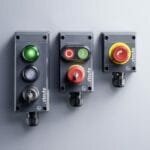~ The right steering parts can pay dividends in the long-term ~
Identical twins share 100 per cent of their genes. Fraternal twins share only 50 per cent. For replacement truck parts, this difference matters. It’s important to source identical parts to the original, rather than similar. Roger Brereton, head of sales at Pailton Engineering, explains the long-term cost advantages of opting for original equipment steering system parts.
A critical part of vehicle’s whole life cost is the maintenance costs accumulated during a vehicle’s service life. Sourcing ‘kind of similar’ replacement steering parts for trucks is just one procurement example that has negative implications on whole life costs. These aftermarket products are not made to the same standards as the original equipment manufacturer (OEM), so could result in costly recurring repairs.
OEM products are those sourced directly from the manufacturer of the vehicle’s original steering parts. The new OEM parts are identical to the parts that need replacing, made with the same considerations and quality assurance.
Contrastingly, aftermarket products are manufactured by a third-party company. These parts may intend to serve a similar function as the parts being replaced, but are not an exact match. It is therefore much harder to ensure the same levels of functionality and quality as the original part. This brings with it a higher risk of failure. Worst case scenario, one unfortunate accident could result in an irreversibly damaged reputation for the operator, all because an OEM part wasn’t sourced.
One reason behind this disparity in performance is that the quality of the raw materials used in manufacturing aftermarket parts varies greatly. Compare this with a premium OEM-quality part that is made from OEM-standard raw materials, tested for consistent hardness and against dynamic loads.
Price shouldn’t be the main driver
Choosing an OEM part may boost the customer’s confidence in the safety and reliability of the part, however, confidence doesn’t protect profit margins. The measurable reward comes from the reduced comebacks and downtime. If vehicles are kept on the road, profits are maximised.
Yet commercial fleet managers are still falling for the false economy of choosing cheap aftermarket parts. Generally speaking, aftermarket parts are much less expensive than OEM parts, which on first glance seems like a budget-friendly option. But as commonly put — buying cheap means buying twice. Aftermarket parts lack the OEM’s guarantee of quality, fit and function that may mean additional purchases in the short-term.
While an OEM part may cost more upfront, this is an investment into a quality part that is guaranteed to last a long time. These parts have been rigorously tested both environmentally and physically, which ensures the part will last.
Ultimately, a transport vehicle could go through one or more aftermarket replacements in the span of the OEM steering part’s life. These multiple aftermarket replacements take trucks off the road and have recurring labour costs associated with each instalment. Suddenly, the aforementioned whole life costs are rapidly increasing.
Matched quality?
With OEM products, you get an identical copy that ensures a much greater level of predictability for the trucks in the workshop. Choosing an ‘identical twin’, that only an OEM can supply, the dimensions and specifications are precisely and accurately matched. This is attributed to the incredibly tight manufacturing tolerances of the OEM, that the aftermarket does not offer.
A contentious issue of the aftermarket is the often-misleading strapline of ‘matching quality’. There are no defined regulations on what is actually meant by suppliers who label products with this phrase. This confusion may lead to truck owners sourcing parts that they believe will last just as long as the OEM part, when this claim has not been validated.
It is often easier to explain what this strapline doesn’t mean. A ‘matched quality’ part certainly doesn’t mean the part is an OEM part, or is OEM approved. Most will not have been tested to the vehicle manufacturer’s quality standards, but simply declared ‘fit for purpose’ by the aftermarket supplier.
The aftermarket part could even be far from identical to the original part. In a bid for the aftermarket supplier to sell the same part for multiple applications, some components could have undergone design changes that broaden the part’s compatibility with other vehicles. This isn’t ideal considering steering parts should be designed and manufactured for a specific vehicle, to ensure suitability.
OEM support
There is also an argument that buying from an OEM is putting money into an economy that everyone benefits from. The latest vehicle design innovations originate from the OEM, not the aftermarket. If cash is being diverted to aftermarket suppliers to cut costs, this lost revenue means less investment into future design and testing.
Showing loyalty to an OEM will benefit fleet managers, operators and passengers in the long term, as new vehicle concepts arrive to market. Fleet managers and buyers should shop in a way that protects the industry they work in.
It works both ways. Purchasing an OEM product also enables access to the manufacturer’s network of support, something which certainly lacks with aftermarket parts. Questions are answered by someone who knows the equipment and parts first-hand, rather than someone with only passable knowledge about the part in question.
Pailton Engineering will only ever recommend buying OEM parts for commercial vehicle part replacements. After all, an ‘identical twin’ part brings with it high levels of material quality, design capabilities and testing standards that an aftermarket supplier cannot compete with.







